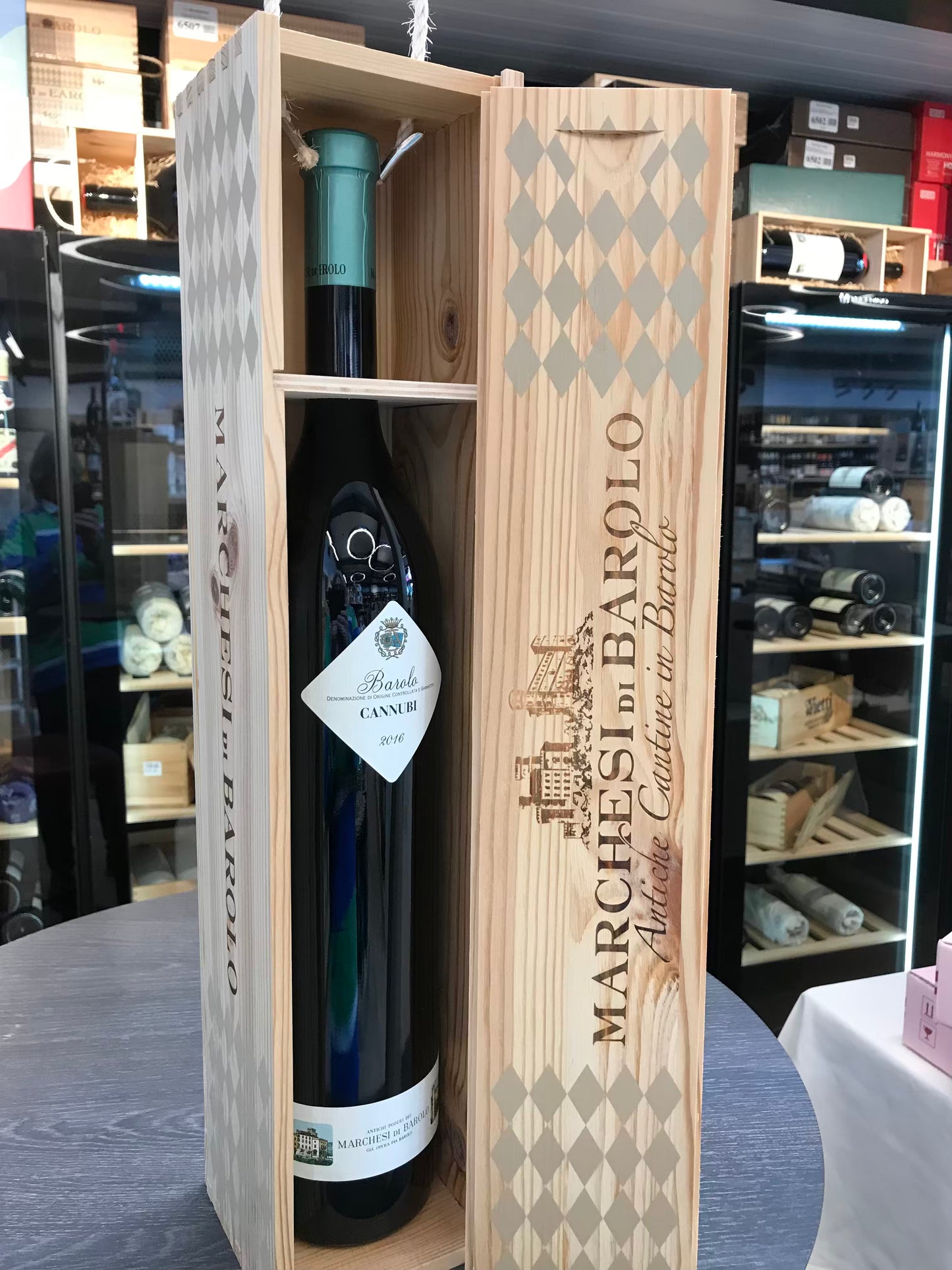2016 Marchesi di Barolo Barolo "Cannubi" 1,5lt. Magnum (Wooden box)
The 2016 Marchesi di Barolo Barolo "Cannubi" 1.5lt. Magnum features a ruby color with garnet red hues. It has an intense aroma with notes of rose, vanilla, spices, roasted nuts, and a hint of absinthe. This robust wine offers a full and elegant taste with soft, enveloping tannins and pleasant spicy and woody notes. It received 95 points from Wine Spectator. The Cannubi vineyard is located on a gradually rising hill in the Barolo area, where unique Serravallian and Tortonian soils create a special microclimate, enhancing the wine's quality. The soils consist of clays, sands, and limestone, known for their rich magnesium and manganese carbonates.
The 2016 Marchesi di Barolo Barolo "Cannubi" 1.5lt. Magnum features a ruby color with garnet red hues. It has an intense aroma with notes of rose, vanilla, spices, roasted nuts, and a hint of absinthe. This robust wine offers a full and elegant taste with soft, enveloping tannins and pleasant spicy and woody notes. It received 95 points from Wine Spectator. The Cannubi vineyard is located on a gradually rising hill in the Barolo area, where unique Serravallian and Tortonian soils create a special microclimate, enhancing the wine's quality. The soils consist of clays, sands, and limestone, known for their rich magnesium and manganese carbonates.

